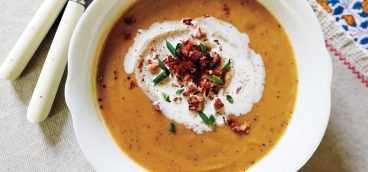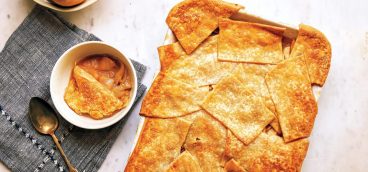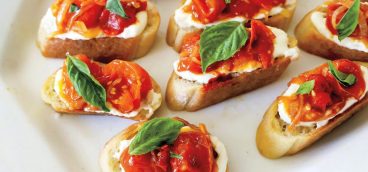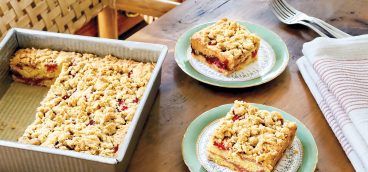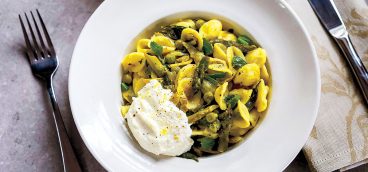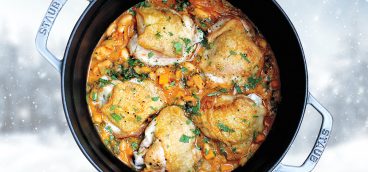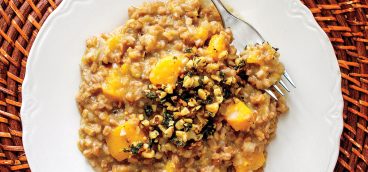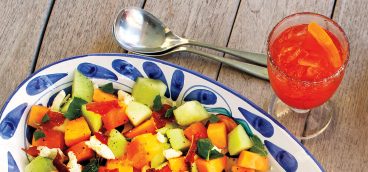Recipe for a Cookbook

I’ve loved cookbooks for as long I can remember, long before I ever fried an egg or roasted a chicken. I would take one off the shelf at my house while growing up, and leaf through it, absorbing the stories, places and foods, many of them foreign to me. One of the first cookbooks I remember loving was Mom’s Big Book of Baking, by Lauren Chattman, which was ironic given that my mom never really baked. I read the book cover to cover and put little Post-it notes on recipes that sounded good to me. This book is still at my parents’ house, with a few ancient crumbs stuck to the banana bread page.
Many years later, I found myself at the early stages of writing my own cookbook. It was never a career goal, but rather, a place I found myself after the winding path of growing up and one job that changed everything. I had worked for Ina Garten during the creation of three of her cookbooks, and after years helping test recipes, I learned to love the process of fine-tuning and perfecting a dish. I was more familiar with the general nuts and bolts of cookbook writing than most first-time authors, but I did not yet appreciate the full scope of work, decisions, and vision that goes into a book.
I knew I wanted to create a collection of recipes that were approachable to cooks of all levels, and that were special without being complicated — the sort of book that could be a trusty companion through the occasions of life. That was my starting point, and I opened my computer and began typing.
First, the recipes. I had in my mind some stories I wanted to tell and a few recipe idea lists, scribbled onto pieces of paper around the house and in my Notes app. I began with some good old-fashioned brainstorming, thinking about ingredient pairings, sketching out chapters and ways to add an unexpected twist to everyday cooking methods. I considered what made each recipe worth repeating, and if I couldn’t come up with anything, I reworked it until I could. I wanted each dish to feel simple, but still special.
This Slow-Roasted Salmon with Leeks and Asparagus is a great example. I started with a basic slow-roasted salmon, then added a scattering of fresh dill, along with roasted asparagus, leeks, and lemon wedges to transform it into a dish that feels fresh and festive.
Then the testing — the making, tasting, tweaking and adjusting of each recipe. The endless grocery shopping and dish-doing. I worked on each recipe until it was smooth, succinct, and balanced, sometimes making the same thing upwards of eight or 10 times — as long as it took. Then, I worked with a professional tester who made each recipe in her home kitchen and shared notes with me, checking for consistency in the way I listed ingredients and converted U.S. measurements to grams. And then, finally, I was done … with the recipe phase.
What makes cookbooks different from many other books is the production element. Writing a cookbook is essentially crafting a world between the two covers, and no step in the process is more critical to that world than the photos. As the author, I was responsible for finding a photographer, as well as a food stylist and prop stylist who make the food look picture-perfect.
We did the photos over 12 days, in my small country kitchen, which was filled with lights and equipment to mimic natural sunlight no matter the weather or time of day. The team brought their many years of experience, and after months of cooking in solitude, or on the phone with my recipe tester, it was a relief to have collaborators.
As my deadline rapidly approached, I wrote and I rewrote. My editor edited, and we went through each page together, staying on the phone for hours at a time. A book designer added fonts and colors and draft after draft, and what had started as an endless stream of text slowly became a book. Then one day, when it felt like this behemoth of a document would eat me alive before I was done with it, I was finished.
The day my first copy arrived, it was like seeing an old friend. And yet, the book was still brand new to the world. The final step in the process is for it to make its way into people’s hands and kitchens, and for the dishes to make their way onto tables. I hope, of course, that people use it and love it and that I sell a lot of copies. But I also hope that beyond any of the usual metrics, the book lives on and becomes one of the beloved favorites on the shelf. I hope the recipes are smudged with food. I may never know, but I hope somewhere, years from now, a curious kid picks it up and flips through the pages, marking her favorites with Post-it notes.
Slow-Roasted Salmon with Lemony Leeks and Asparagus
Serves 6
2 medium leeks, dark green leaves trimmed
1 lemon, very thinly sliced
5 tablespoons extra-virgin olive oil, divided
Kosher salt and freshly ground black pepper
2-pound salmon fillet, skin removed
1 pound asparagus, trimmed and cut into 3/4-inch pieces
Flaky sea salt, for serving
Fresh dill, for serving
Grated lemon zest, for serving
STEP 1
Preheat the oven to 325°F.
STEP 2
Thinly slice the leek crosswise into 1/4-inch-thick rounds. Place the leeks in a large bowl of water, swish them around to loosen any grit, then lift them out with a slotted spoon and transfer to a colander to drain. Pat the leeks dry with a clean kitchen towel and spread them out on a sheet pan.
STEP 3
Add the lemon slices to the sheet pan. Drizzle the leek and lemon with 2 tablespoons of the olive oil and sprinkle with 1/2 teaspoon kosher salt and a few grinds of black pepper.
STEP 4
Transfer to the oven and roast until the leeks are tender and lightly caramelized, about 30 minutes, tossing twice throughout.
STEP 5
Meanwhile, pat the salmon dry and set aside at room temperature.
STEP 6
Add the asparagus to the sheet pan along with another 1 tablespoon of the olive oil and 1/4 teaspoon salt. Toss well, then push the vegetables to the edges of the pan to create space for the salmon. Place the salmon on the pan, rub all over
with the remaining 2 tablespoons olive oil and sprinkle with 1 teaspoon salt and 1/2 teaspoon pepper.
STEP 7
Return to the oven and roast until the salmon registers 120 to 125°F on an instant-read thermometer and flakes easily with a fork, 15 to 25 minutes, depending on the thickness of the fillet. (Because the salmon is cooked so gently in this method, it may still look slightly translucent on top—that’s okay!)
STEP 8
Transfer the salmon and vegetables to a platter, arranging the vegetables around the fish. Sprinkle the salmon with flaky salt, dill, and lemon zest. Serve warm or at room temperature.

